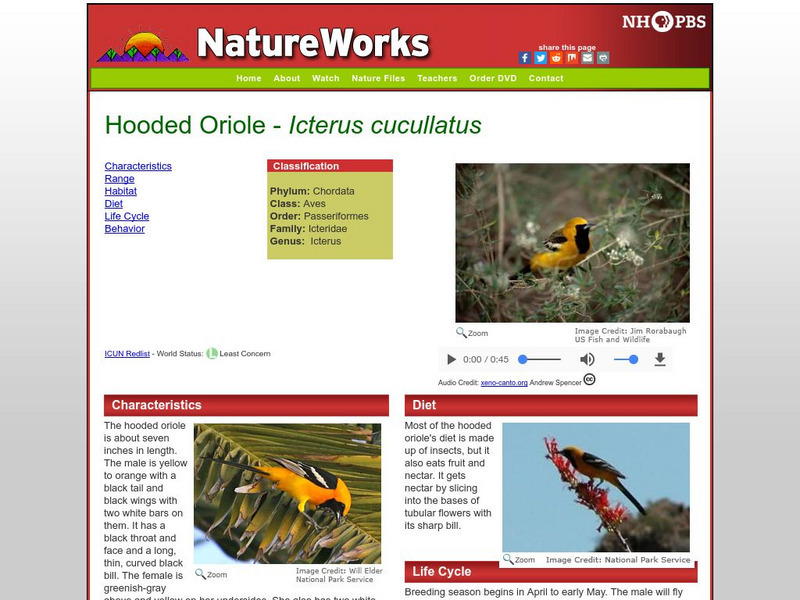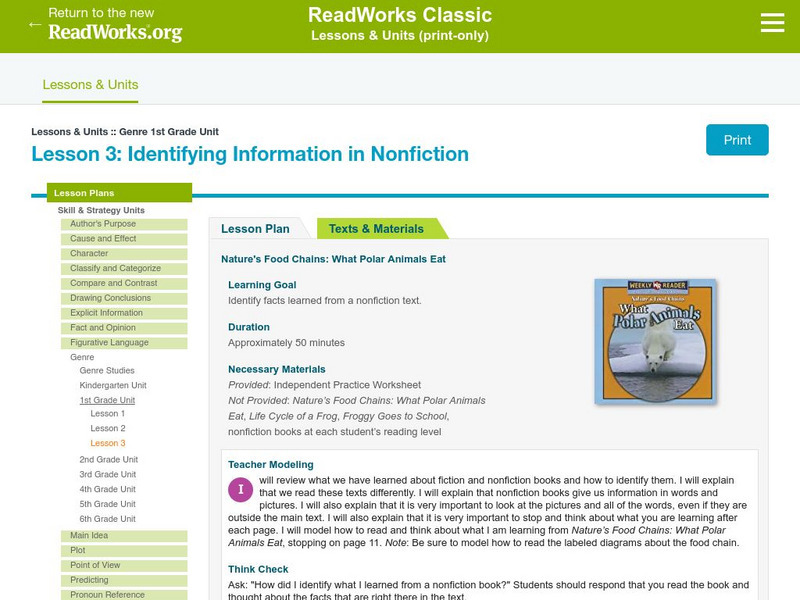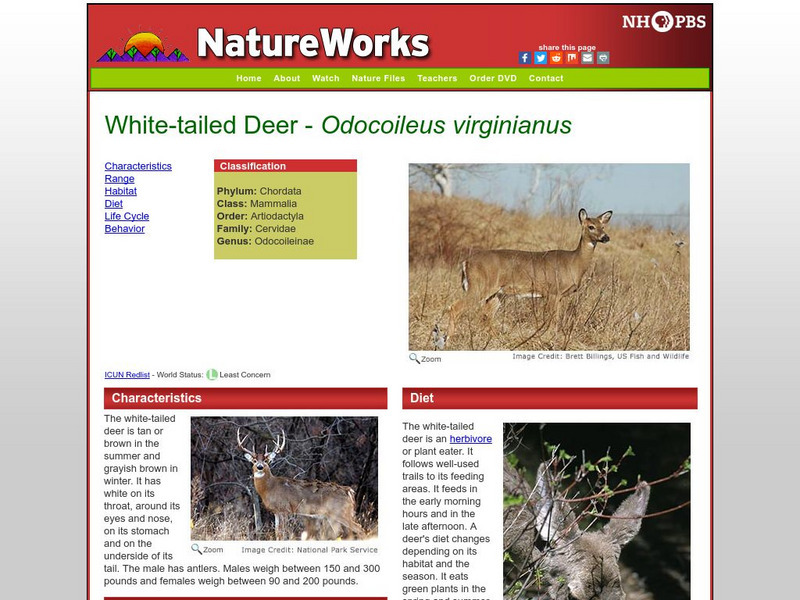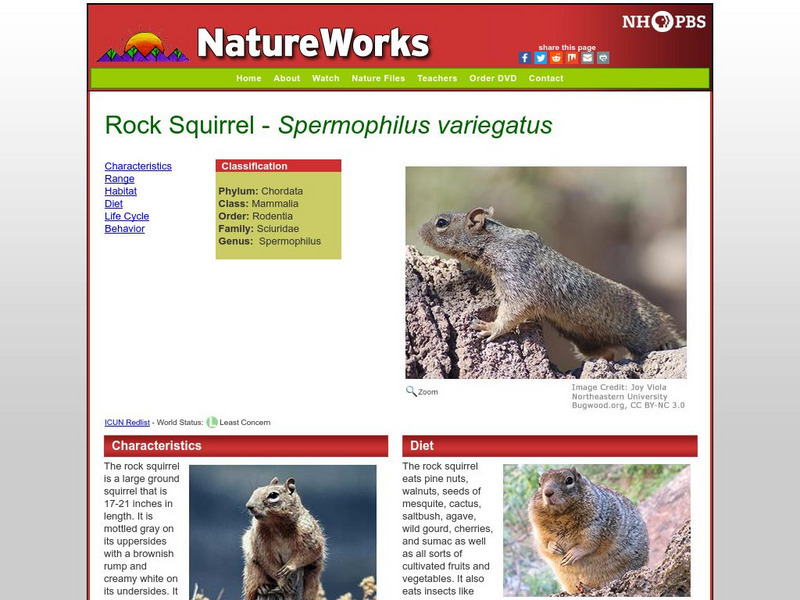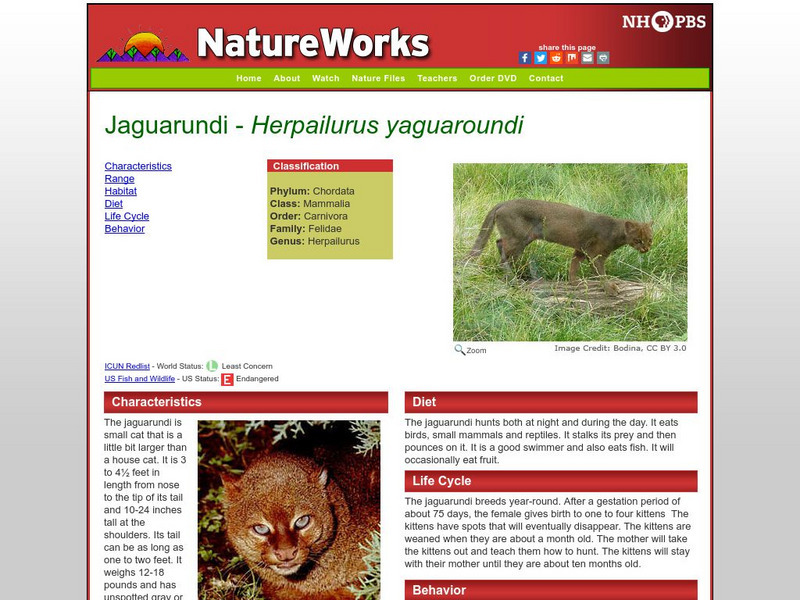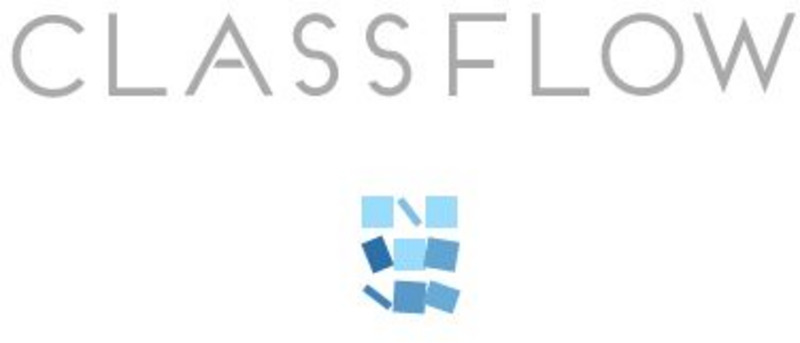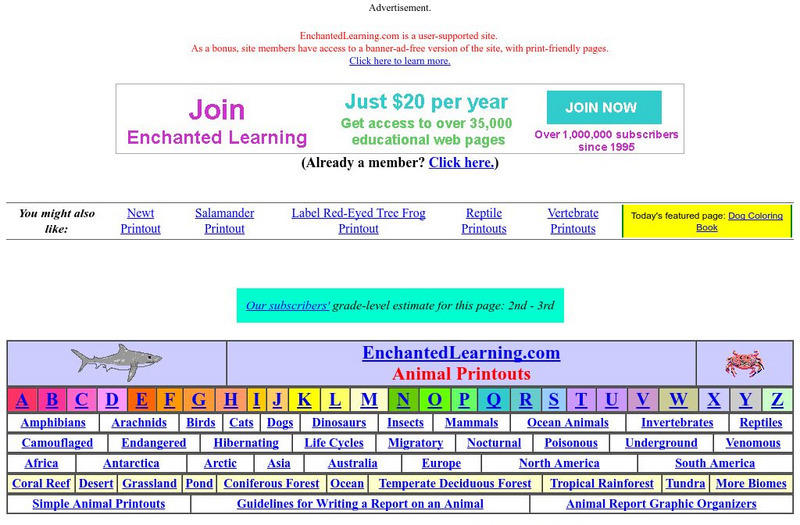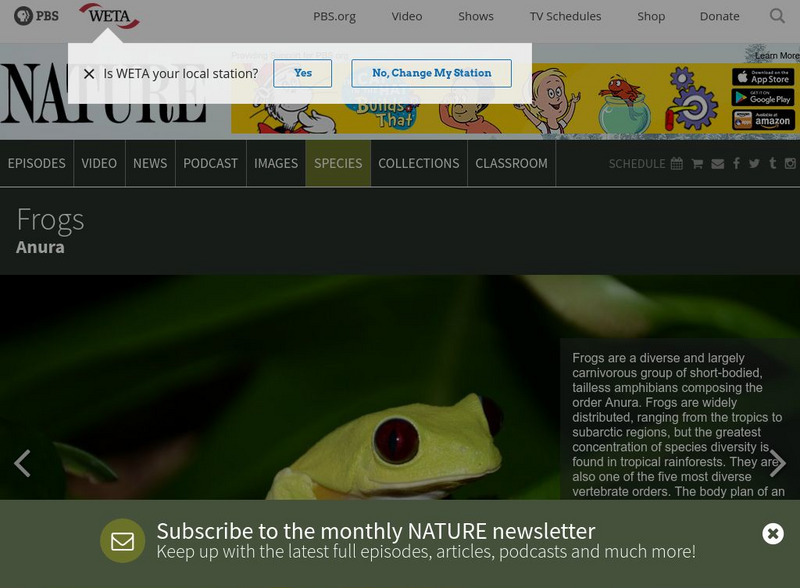Australian Museum
Australian Museum: Beetles
This thorough site provides a general overview of beetles and focuses on topics such as habitat, anatomy, life cycle, feeding, predation and defense, and beetles as pests.
Oakland Zoo
Oakland Zoo: Chimpanzee
This resource provides a general overview of the chimpanzee. The content includes a focus on the ape's habitat, diet, life cycle and social structure, special adaptations, and status in the wild.
Environmental Education for Kids
Eek!: Alien Profile: Gypsy Moth
Learn how the gypsy moth first came to North America, how it spread, how to identify it, its life cycle, the damage it causes, and what can be done to fight this invasive species.
Unite for Literacy
Unite for Literacy: Saving Animals From Extinction: A Nest for African Penguins
Learn some facts about the African penguin in this book. Includes audio narration in English and Spanish with text in English.
PBS
Nh Pbs: Nature Works: Eastern Chipmunk
Did you know the Eastern Chipmunk has white fur on its stomach and reddish-brown fur on its back? Come and explore this educational resource to learn more about this creature's diet, habitat, life cycle and more.
PBS
Nh Pbs: Nature Works: Hooded Oriole
What makes the Hooded Oriole unique? Find out when you visit this educational resource featuring information ranging from diet and habitat to behavior and life cycle.
PBS
Nh Pbs: Nature Works: Yellow Crowned Night Heron
Come and check out this educational resource featuring the Yellow-crowned Night Heron. This site identifies the characteristics, life cycle, diet, habitat, range, behavior and photographs of this aquatic bird.
Read Works
Read Works: Genre 1st Grade Unit: Identifying Information in Nonfiction
[Free Registration/Login Required] A lesson in which students use the books Nature's Food Chains: What Polar Animals Eat by Joanne Mattern, Life Cycle of a Frog by Angela Royston, and Froggy Goes to School by Jonathan London to learn to...
Read Works
Read Works: 1st Grade Lesson: Purposes for Reading
[Free Registration/Login Required] A lesson in which students use the books Nature's Food Chains: What Polar Animals Eat by Joanne Mattern, Life Cycle of a Frog by Angela Royston, and Froggy Goes to School by Jonathan London to learn to...
PBS
Nh Pbs: Nature Works: White Tailed Deer
Find out what makes the White-Tailed Deer unique when you explore this educational resource. This site identifies characteristics, life cycle, range, behavior, habitat and diet for this mammal.
PBS
Nh Pbs: Nature Works: Rock Squirrel
This site provides a look at the Rock Squirrel. Come and explore the characteristics, life cycle, diet, habitat, behavior and range of this fascinating rodent.
PBS
Nh Pbs: Nature Works: Jaguarundi
Learn more about the Jaguarundi through the exploration of this resource. The content of this site includes information on behavior, characteristics, life cycle, diet, range and habitat.
CK-12 Foundation
Ck 12: Life Science: Cyclic Behavior of Animals
[Free Registration/Login may be required to access all resource tools.] Many animal behaviors change in a regular way. They go through cycles. Some cycles of behavior repeat each year. Other cycles of behavior repeat every day. Learn...
CK-12 Foundation
Ck 12: Life Science: 8.5 Cyclic Behavior
Explore different types of cycles in animal behavior.
Science Education Resource Center at Carleton College
Serc: Phenology and Weatherguide Calendar
An activity where students observe the grounds around their school to study the plant and animal life cycle. Students will make a map of the school to keep track of their observations. Students will also compare their phenology calendar...
ClassFlow
Class Flow: Animals: Food Chains, Characteristics, and Habitats Around the Worl
[Free Registration/Login Required] This flipchart is a great introduction to ways animals get food, characteristics of animals, habitats around the world. It contains pictures that will help students understand life cycles and where to...
Georgia State University
Georgia State University: Hyper Physics: Energy Cycle From Plants to Animals
Find out about the essential role energy plays in cell function and in sustaining life. Trace energy transformations as they pass from one living thing to another.
San Diego Zoo Global
San Diego Zoo: Elephant
This resource provides detailed information about the elephant, as well as several pictures and audio clips. [1:00]
Enchanted Learning
Enchanted Learning: Amphibians
Come and check out this awesome amphibian resource from EnchantedLearning.com. Students and teachers will benefit from the printouts found within this site. Some printouts are in different languages.
PBS
Pbs Nature: Frogs and Toads
Do you know how to tell the difference between a frog and a toad? This site provides interesting facts and information about this type of amphibian from where they live to what they eat and more.
Louisiana Department of Education
Louisiana Doe: Louisiana Believes: Ela Unit: Grade 1: Frogs
First graders gather information from a variety of texts to more deeply understand the connections between literary and informational texts. They build on knowledge of the seasons to focus on the life cycles of animals, specifically...
BiologyWise
Biology Wise: Parasitic Flatworms
Describes types of flatworms that are parasitic to humans and animals and what their life cycle looks like. Two or more hosts are needed for them to complete their life cycle.
Smithsonian Institution
National Museum of Natural History: Ocean Planet
Detailed website that was a companion to a 1995 traveling exhibit of the Smithsonian. Links to lesson plans and other educational materials are at the bottom of the page. Enter the exhibition to explore the world of the ocean.
PBS
Nh Pbs: Nature Works: Polar Bears
This site created by NatureWorks focuses on the Polar Bears. The content of this resource includes a look at this species' characteristics, range, habitat, diet, behavior and life cycle.
Other popular searches
- Animals and Life Cycles
- Animals Life Cycle Pictures
- Animals Life Stages
- Desert Animals Life Cycle
- Animals Life Cycles
- Plants and Animals Life Cycles






